
I probably wouldn’t enjoy being Jonathan Bush’s athenahealth co-founder. JB is as magnetically drawn to a TV camera as a moth to a bug zapper and vice versa, so he’s always going to be seen as the company’s voice to outsiders. Todd Park doesn’t seem to mind too much, explaining that their original plan for the company called on them to use their respective strengths to build it successfully. They’re still best buds, it seems, sometimes wandering into man-crush territory with their unabashed admiration of each other after a bunch of years of being joined at the hip.
Eleven years after athenahealth’s founding but only a short time after its most noticeable success, Todd has retired from the company at 35, moving on to serve on its board, raise a family, and start other ventures.
I usually provide interview context by noting when the subject laughs, but it’s pointless here because Todd talks fast, laughs constantly, and seems to be having a ball. He’s putting the same energy into his latest startup: a son born last month (he ended his e-mail inviting me to call at any time with, "I’m generally up at night these days, feeding and burping the baby, so am available literally 24-7 :)"
I originally pictured him as Apple’s Steve Wozniak, the ultra-nerdy limelight-avoiding engineer who helped build the company, then left at 36 with mountains of cash and turned it over to the intense visionary Steve Jobs. I think Todd and JB are a lot more alike than the two Steves, though, and I expect that Todd’s business ideas will keep in a non-nerd limelight of his own.
Let’s start with a little background about yourself.
I co-founded athenahealth with Jonathan in 1997. Before that, he and I had met at a consultancy, Booz Allen Hamilton. We were the two entry level analysts in their new managed care strategy practice in New York, so we spent more time with each other than we spent with our significant others. We worked 24/7 traveling around the country together and fell deeply in love with each other. He’s my brother from another mother.
We decided to start a company together and started athena in 1997 as an obstetrics physician practice management company. We bought a couple of practices and got our butts handed to us by how hard it was. We discovered the root cause was that we didn’t know how to bill and get paid. Tried to find an answer to that problem. Couldn’t find one so, built our own. We were the first Web-based revenue cycle management service. Then we were told politely by the doctors that the solution to their problems was not to work for us, but for us to work for them by offering this Web-based “get them paid” solution. So we morphed athena into that, raised venture capital, and then took the company out from there.
I guess that’s my story. I’m so intertwined with athena, I don’t know how to tell my story without talking about athena.
I don’t know you personally, but I can’t imagine Jonathan working happily as a consultant. Still, it must have been a big jump.
Absolutely right. I loved Booz Allen. He did too. We loved being there. We loved learning tons about what was going on in healthcare, but, yeah, you’re absolutely right. Both of us were entrepreneurs at the core, and while we were very appreciative of the time we spent at Booz Allen and the people we met there, we really did want to start an actual business together.
We considered a bunch of different ideas, ranging from disease management to demand management. We briefly considered an air ambulance transport company and a healthcare venture capital company, but then, for a variety of emotional and business reasons, we focused on OB.
The emotional part was through Jonathan’s wife, Sarah. She was training to be a certified nurse midwife in the public health system in New York City. She would come home and tell us stories of what she had seen that were really frightening, actually, in terms of … shall we say, room for improvement … in how babies are delivered in America. From a business standpoint, being analytical geeks, we learned that America spends a lot more per pregnancy than any country in the world, but has outcomes that rank 23rd or 24th. We saw a big opportunity to be helpful there.
We started athena as a baby company. Yeah, we had run nothing but laps before in our entire life, so it was a crazy kamikaze move, but I think that every entrepreneur, at some point in their life, has to have some of that crazy kamikaze spirit to try to do something that hasn’t been done before.
We went to go talk to Bill Donaldson, who is one of the founders of Donaldson Lufkin & Jenrette and later chairman of the SEC. We wanted him to give us money for our new business, so we gave him the business plan for the OB company. He read it and said, "I don’t understand this plan. It doesn’t make any sense to me. But listen, kids, I’m going to give you some advice. I’m going to give you a pearl. This is, generally speaking, probably not going to be the business plan that ultimately you follow. It’s an excuse to get close enough to the customer — the doctor — to understand what they really want. And once you understand what they really want; once that opportunity comes knocking on the door; for crying out loud, answer the door.”
At the time we said, “Oh, this is just a bunch of platitudinous advice.” We really wanted his money. But then, when we were in the middle of getting our butts handed to us as OB practice managers and realized that we’d stumbled across this opportunity to help doctors nationwide with medical billing, we suddenly had Bill Donaldson’s words come back to us. Actually, it took running a medical group to understand what was really going wrong with them and what the root cause of their issues are and to give us the kind of experience we needed to create the business that athena would ultimately ride to success.
So, I would say that the first company that Jonathan and I started failed: athenahealth Version 1.0, the OB practice management company. But like a phoenix from the ashes, the athenahealth Web-based business services company arose from that experience and would never have happened if we had not gone through the inferno of trying to run medical practices ourselves.
So the conclusion is that you might as well jump in, do something, and then react to what happens.
Exactly right. Put enough of an idea together to inspire a team of really good people to jump with you into a general zone like medical practices. Then, just learn as much as you possibly can and what you really can do to be helpful and then act against that opportunity. No question. There was a study I heard about recently that I’ve been trying to track down that looked at 150 companies from start-up to ultimate conclusion. They found that something like close to 100% that had actually survived had changed their fundamental business model at least once, but not more than once. So I think that again speaks to the truth of what Bill Donaldson was talking about.
All we knew is that we wanted to help doctors be the best they could be. In fact, the vision statement of the company hasn’t changed. It was and is, “To help make healthcare work the way it should.” We just thought that meant that we needed to go and run doctors’ offices. It turns out that there are a lot of people that know that really well, but they need help and the kind of help that athenahealth was ultimately able to develop.
Jonathan obviously comes from a privileged family with connections. Was your background similar?
No. My father emigrated to the United States from rural South Korea in the late 60s on a scholarship to the University of Utah. He got a PhD in chemical engineering and joined Dow Chemical. He worked there for the next 30 years. He actually has about 72 patents, more patents than anybody in Dow Chemical’s history except for Dr. Dow himself.
He raised me in a small town in Ohio. He sacrificed a lot to try to give me the best options he could. I went to Harvard for my undergrad education. I actually wanted to be in the Naval Academy and I really had my heart set on that, but then Dad and Mom sat me down one evening and said, “Son, no pressure, but we’ve wanted you to go to Harvard since before you were born.” The way they said, that I knew there was no hyperbole. I knew they were serious. I said, “Jeez, if you’re that serious about it, fine, I’ll go.” So I went.
In the matter of what I do in my life, nothing will ever compare to what my dad did: growing up in the Korean War, born dirt poor, emigrating to a brand new country, and becoming one of the most decorated chemical engineers in the world. My entire life is a quest to live up to half of what my dad actually did in some ways. That’s my background. We’re an immigrant family.
If you hung a label on Jonathan, he’s the Steve Jobs, the charismatic visionary. Are you his Steve Wozniak?
That’s actually an interesting question. Your Wozniak analogy is interesting. I actually don’t know enough about the history of Apple to know whether that’s a direct analogy or not.
What I would say is that he and I have been partners in building athenahealth from the ground up. He’s Yin to my Yang and we have collectively co-led and co-built athena from the very beginning.
One of the things that I insisted upon from the very beginning is that we not be co-CEOs because I didn’t believe in the idea. I believe in clear chains of command, so I said, “Look, you be the CEO. That that doesn’t mean I’m not going to be committed to building this thing together." And so we did, and I think that we’ve got really complementary experiences and skill sets and mindsets.
For example, he’s a terrific spokesmodel with the media and does that really, really well. I prefer to be on the quieter side of things. What’s interesting is that people who meet us say, “Wow, you and Jonathan are so different.” In fact, deep down, he and I are really, really similar. We both have the same world view, the same values. We both believe in doing well by doing good. We both are passionately committed to healthcare and trying to make a difference in a practical and tangible way in healthcare. So we’re bonded at a very deep level, even though we may physically and in other respects look very different from each other. We’ve been partners in building athena like I imagine Jobs and Wozniak were, and each being what the other needed us to be to lead the building of this company.
Have there been times you’ve wanted to put a muzzle on him?
No. Truthfully, yes, but that being said, it’s a package, right? So Jonathan’s great strength as a communicator is that he is a completely frank, completely open, completely honest guy. If you want him to be that way, and he’s incapable of being any other way, he’s going to do things and say things which come straight from the heart and straight from the top of his head. Sometimes the darndest things pop out there, but I’m sure that from time to time he says things he’s wishes he could reel back. But I’d say that 95% of the time, he says stuff that’s spot on. He says things that no one else wants to say that need to be said. I think that athena loves that.
I love that, and frankly, that’s my style as well in a lot of ways. I just don’t talk quite as much as he does. The industry needs people like that. The industry needs more people like you and Jonathan who bring frankness and pizzazz and a sense of humor to a space that badly needs that. I think that he and you have done this industry an enormous favor by doing that.
I worried that his style might be a problem for the CEO of a publicly traded company. Did you guys sit around before the IPO and say, “All right, here’s a list of things we can’t say any more?”
That point was raised to us by the people who were helping us to go public. What we said very explicitly was, “Look, we’ve always been a really open, really honest, really frank company. We’re not going to suddenly change our personality as a public company.”
Yes there are certain rules about what you can and can’t say by virtue of SEC regulation. That, of course, we’re abiding by very strictly. But in terms of being frank about our point of view about what we think is going on, we actually have explicitly said that we want to stay that way. Our early experience is that in a lot of ways, that’s actually potentially, ironically enough, been helpful to us as a public company because people are so used to being spun and getting half-truths that it’s different for them to actually to get a company that just talks in as straight a line as it possibly can all the time. That’s what we always have been and what we feel like we need to continue to be.
Frankly, we couldn’t be any other way if we tried. I think, in the long term, it will actually be an asset for us because it will build a level of trust with our constituencies that we wouldn’t have gained if we were much more carefully controlled and were spinning much more tightly than we do as a matter of course today.
Was it anti-climactic to actually be in operational management as opposed to the thrill of actually starting a company and taking it public?
No. I think that each phase of athena has been incredibly exciting. I would say that the phase that we’re in now is equally exciting, as exciting as each stage we’ve been in in the past. In fact, the IPO itself was a bit anti-climactic, in the sense that it was great and we got together to talk about and celebrate it and then everybody got back to work. The company didn’t think or act any differently to pre-IPO.
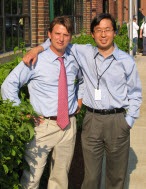
You got up on IPO day, got dressed, and then what?
I have to say it was one of the more surreal experiences. We got up and we knew that we had sold our blocks of stock to all the people that we had talked to on the road show. We went to the NASDAQ. Of course, there is no NASDAQ in the physical sense, but they have this little show site in Times Square, right, where they bring you? They’ve got these people on terminals just to make you feel comfortable, like there’s something that’s happening. I don’t know what those people are doing, but it’s like Disneyland, it’s cool.
I remember the first truly surreal moment being that there was this six-story spherical billboard planted on top of the NASDAQ Building in Times Square. They took us outside and they flashed a “Welcome athenahealth ATHN” sign with basically a picture of a baby and a doctor and stethoscope and our slogans and whatnot, six stories high on the NASDAQ. I said, “What is going on here?” I took a picture on my iPhone and e-mailed it to the company and everyone circulated it and was struck by it and said, “Wow, that’s really surreal.”
Then we went in to a little conference room and they had, like, a couple of crackers, which was nice, and there was this screen, and they said, “You’re going to start trading at 11 o’clock.” Great. So we counted down: five, four, three, two, one, and nothing happened. We said, “Uh, did we do something wrong? Is the NASDAQ broken? What’s happening?” And he said, “Oh, we’ll figure it out.” And we waited for what felt like forever. It was probably only a couple of minutes.
Keep in mind, we had gone out at $14 to $16 a share; been lucky enough to get oversubscribed, like 27 times at $18 a share. So we said, “OK, let’s see what happens. It’ll be interesting.” And the first number that flashes on the screen is 30. We said, “Wow, that’s pretty amazing.” Then it floated downward to like 26. Then it shot up again, something like 34, 35 … I don’t remember any more. I just remember just feeling crazy.
Then we flew back, met with the whole company, and explained what happened. We emphasized that the IPO itself isn’t the achievement. The achievement is that we’ve collectively built something that the world is beginning to embrace. Ten years of incredibly hard work to build something that is actually helpful to healthcare. It was beginning to find a broader audience, so everyone should be happy about that. And everyone was happy about that, and then everybody went back to work.
The thing I’m happiest about is that, actually the next day, you couldn’t tell the difference between that day and any day prior to the IPO. That was fantastic, because the thing I’d been most worried about was that the culture of the company would change; the openness would change, the frankness would change; the irreverence would change; focusing on the long-term would change. And none of that has changed, which is testament to the culture that everyone holds so dear here and also to the strength of our recurring revenue business model, which is just a great, predictable foundation upon which to build a business in a really rational, predictable way and be able to stay focused on the long term.
But somewhere in the back of your mind, you must have been thinking, "Holy crap, I’m now worth $25 million and I wasn’t yesterday.”
Of course, intellectually, I understood that, but it still hasn’t really hit me, to be honest with you. My wife resolutely refuses to believe that that money exists. My wife fell in love with me seven years ago when I wanted to be a writer, so she was not expecting to be worth whatever it is that we’re worth now.
Hang on to her.
Absolutely. In fact, she was the trigger event for my recent retirement. So I am hanging on to her and doing everything I can to make sure I hang on to her. From a personal standpoint, my burn rate hasn’t changed pre- versus post-IPO. I don’t plan for it to change.
Surely you bought something cool.
I gave half a million dollars to a charity called VisionSpring that’s mass producing eyeglasses in China for the global poor. That’s something I wouldn’t have been able to do pre-IPO, but that’s about the only thing I did, actually.
What kind of car do you drive?
I drive an Acura TL. I would have bought a Honda Accord because I’m a lifelong Honda Accord driver, but I wanted a GPS because I have bad sense of direction and Bluetooth because I’m menace enough to other drivers without talking on my cell phone. The Accord at the time didn’t have GPS and Bluetooth, so I had to buy this thing called a TL instead. It seemed pretty good value for money. I’m not kidding about being a menace to other drivers and having no direction sense. If we ever get together, Tim, don’t let me drive you anywhere. Actually, now I that have the TL I’m a bit safer, but still, don’t let me drive you anywhere.
It doesn’t seem like a really emotional purchase that you went with something with a GPS.
Ha. Actually, I specifically told the dealer I want to buy something that just blends in the road. I do not want to drive anything that calls attention to itself, so get me the most generic-looking car that you have that has GPS and Bluetooth. He said, “Well, I’ve got this thing called a TL.” I said, “Well, I’ll take a look at that.” I still don’t remember what it looks like, so it’s very forgettable. It’s great. It’s perfect for me.
I’m absolutely delighted that athena is a huge financial success, but the thing I’m actually prouder of is that we’ve collectively built an amazing company that is actually doing something to be helpful in healthcare. If you wanted to make a fortune in 1997, you probably wouldn’t have started a company to buy OB practices and run them and you probably wouldn’t have bought, as your first OB practice, one in San Diego that serves undocumented immigrants and Medic-Cal patients, which was the practice that we bought and the practice from which athena was born. If you wanted to make a killing, you would have started buypottedplantsonline.com. You wouldn’t have started with an indigent OB women’s health practice. But that’s what we did.
What’s wonderful to me is that there are a whole bunch of people that jumped in feet first with Jonathan and I to do that, including the doctors and midwives at that practice, who suddenly found themselves holding stock in the company worth over a billion dollars, which is crazy to them, but it couldn’t happen to a better group of people. That kind of financial reward to me is not the end goal, but is just a wonderful by-product of what is really wonderful, which is building an institution that actually helps, that is actually helpful in a concrete way. That’s what I’m proudest of and that’s what makes me happiest.
It’s hard to believe you’re retiring permanently. What led you to that decision?
The root of why I’ve retired as an employee is that I made a promise to my wife years back that, as soon as we’d gotten athena to be strong enough such that it could fly without me on a day-to-day basis, at that moment, I would take myself out of the day-to-day management, we’d move to California where Amy’s from, move next to her parents, and start a family. That’s what we’ve always wanted to do.
Being a first-time entrepreneur, I didn’t really have a good sense of the entrepreneurial space-time continuum, so I told Amy, “I’m positive this will take me no longer than 2004.” And it turns out it took a little longer than that, but by 2007, I was sure that we were there. Actually, it wasn’t the IPO that convinced me, it was the state that the company achieved in order to be ready to be public. So the IPO was more the functional fact that we’d achieved that state, as opposed to the actually certification of it.
I feel that athena is now strong enough to be an institution to withstand the loss of anyone day to day. So at this point, I really have to keep my promise to my incredible wife and do this thing. I retired from day-to-day management in January of 2008 and joined the board and then took on this Chief Athenista role. The title was not my idea, by the way. The root of the title, in case you want to know, which you probably don’t, but in case you do … remember our first practice when we were an OB company was in San Diego and we were serving a predominantly Latina population and our workforce was predominantly Latina. They started calling themselves Athenistas and to this day everyone at athena calls themselves an Athenista. So they gave me this title Chief Athenista.
Basically, the function was to be a long-term strategist. I’d spent so much time nose to the grindstone, nuts and bolts building athena, that I hadn’t actually in quite awhile taken a step back to take a look at what was going on in healthcare and to plot where I thought athena should ultimately go, in the next 10 years anyway. I spent the next six months interviewing over 150 leaders across healthcare and reading through about 50 major studies on the healthcare system and various aspects of it. I put together an assessment of state and direction of U.S. healthcare and a long-term, 10-year vision for athena.
What was interesting, when I initially started, people gave me all kinds of ideas: athena starting a data business, athena going international, athena doing all kinds of things, athena Intergalactic. The most interesting was that I’d traveled the furthest reaches of the healthcare system and was looking for the boat we had missed. The more I learned, the more I actually became convinced there was no additional boat to launch; that in fact, the sweetest spot in healthcare to be was the space that we were already in and that we had less than 1% market share.
So I came back and I said, “Look, I’ve walked the furthest reaches of American healthcare and what I’ve concluded is we need to double down and focus on executing the bejeebers out of what we’re doing right now in creating a national infrastructure to help doctors be the best they can possibly be and do that for more than 1% of American docs."
So that’s what I put into my long-term vision for athena. I profiled a bunch of different trends that you’re familiar with: consumer-directed healthcare, pay-for-performance, medical home, all of which are things that I think that athena, through our national platform, can do a lot to facilitate and to help doctors deal with and actually turn to their advantage and to the advantage of their patients in the next ten years. I said, “Look, let’s just double down on this national infrastructure play for docs, nurse practitioners, and midwives. Let’s do that play and not get distracted by delusions of grandeur.”
Once I’d presented that and once our board and management team had bought into that, I said, “There’s no athena Intergalactic for me to start, so what I should do at this point … thinking about our long-term strategy is not going be a full-time endeavor unless I’ve really gotten it terribly wrong, which I hope I haven’t, so let me hang up my cleats as an employee entirely, which I did at the end of August, and convert to a pure board member.”
One of the reasons I wanted to do that was because I wanted to become an independent board member so I could take a bigger leadership role on our board, eventually, in doing things that independent board members can do that non-independent board members can’t. I’m actually now functioning as a very active athena board member, functioning as a godfather/co-founder, visiting athena every other month. I’m writing an internal blog, inspired by HIStalk. I’d actually like to get some tips from you if you wouldn’t mind at some later point.
I’m thinking about long term strategy, networking across the industry, speaking on behalf of athena at conferences, hosting brown bag lunches with our employees, starting an athenahealth Foundation, which Jonathan and I are going to start funded by $1 million each of our own money, and just taking a godfather/co-founder role and a board role, and then moving to California.
I just had a son at the beginning of August. I’m trying to be the best father I can possibly be. Over time, what I anticipate doing is investing my time and money in a set of entrepreneurial ventures, both not-for-profit and for-profit, that can advance the ball in healthcare; that can advance the cause of healthcare in a variety of ways. athenahealth was obviously my first corporate child and I’ll continue to serve on athena’s board and be its godfather for as long as I draw breath. I have recently got involved in another venture which was mentioned in the Washington Times article, called Maria Health, which I’ve started with Giovanni Colella, who was CEO of RelayHealth and then Sapient before that. Our venture capitalist is Bryan Roberts of Venrock, who is one of the lead VCs behind athena.
It’s actually a consumer-oriented company. It’s super duper early so I can’t really get into specifics at this point, but generally speaking, it’s a company that’s seeking to take an athena-like approach to helping healthcare consumers navigate an increasingly complicated healthcare system. It’s got a great team, veterans of athenahealth and Yahoo who are part of it. It’s off to a great start. It’s too early to talk a lot about, but it’s been a ton of fun for me to learn more about the consumer space.
As you know, consumerism is a force of growing power in healthcare. I think a lot of what’s going to be happening in healthcare is going to be consumer-driven in the next ten years, so it’s exciting to be learning about that. I’m looking at a number of other both not-for-profit and for-profit ventures in which to invest time and money to help these entrepreneurs make the differences that I think they can make in healthcare for the better. So I think that’s what I’m going to do. First and foremost, be the best dad and husband I can possibly be going forward.
There’s one question that has come up in the past, maybe kind of a dweeby technical question. There’s been some speculation that I’m going to dump all of my shares in athenahealth. I just wanted to say that I’m not. I’ve actually exercised and sold a set of employee options that were “use them or lose them” as a function of my employee agreement. When I transitioned from employee to chair board member, I had to use or lose them, so I exercised and sold them.
But even after those transactions all go through, I still hold 900,000 shares of athena stock. I am very, very bullish on athena. I will hold a lot of stock athena for a really long time and continue to a very active board member and godfather to athena. Again, the proof is in the pudding. So people can watch and see if I dump my 900,000 shares or not, but I thought I might communicate more expeditiously and say that that was behind my recent sales and that’s what my plans are going forward with athena.
You’ve been attached by the hip to Jonathan for all these years, but now you’ve got a chance to do some things on your own. It must be satisfying to have feet in both courts.
I’m grateful that Jonathan is here to continue to lead athena, because if Jonathan weren’t here, I couldn’t retire and go on to the next phase of what I want to do. So, I’m grateful for that, but honestly, if I had a choice, I’d want to do the next set of things with him, actually.
I think that starting any business is incredibly difficult. Starting a business in healthcare is especially difficult, and if Jonathan and I didn’t have each other, then athenahealth wouldn’t be here now. Frankly, if Jonathan and I didn’t have a whole bunch of other people, athenahealth wouldn’t be here right now. There’s too long of a list.
I’m not a big believer in the epic hero theory of entrepreneurship that “One man, in a world filled with chaos and darkness, takes a stand.” That’s bullpucky. I think that it’s a small group of people that decide to take a stand and make something happen, each of whom couldn’t do it themselves, but collectively they render it possible to do something really unbelievable.
It’s one of my favorite quotes. I don’t remember who said it. but it’s a question and answer. Someone says, “Is it possible for a small group of people to change the world?” and the answer is, “Yes. In fact, it’s the only thing that ever has.” I think that athena is a great example of a change that’s helpful that couldn’t have been done by any one person, that was engineered by a group of really committed people.
One of the best parts of athena has been the privilege with that incredible group of people. The reason why I was so confident that athena would continue to rock the house even though I’m not there day to day is because that group of people is still here and bringing on wave after wave of new people who are incredible to perpetuate the beneficial change that we’ve gotten going in our corner of the world here.
How do you scale it up, though, and make sure that what made you special when you were small can still make you special when you’re huge?
That is a terrific question. I don’t think that we necessarily can come up with a definitive answer to that question even if there is one. But what I can say is that we’ve fought harder about that question than any other similar question.
I think the gist of our answer is culture, at the end of the day. We have a culture that’s extremely focused on dong well by doing good, a culture that’s focused on teaching and learning and playing for the team to win, and a culture that makes each of those things a living and breathing art of how we operate, how we recruit, how we pay, how we think, as opposed to just banners on a wall somewhere. It’s that culture that I think, more than anything, has attracted the people we have attracted.
It might be the fact that medical billing is so super sexy, but actually it’s probably the case that it’s less the sexiness of medical billing and more the fact that there’s a do good, do well team-oriented, continually teaching and learning focus culture at athena that attracts the best people in the world. Those best people recruit more of the same kind people. They come up with the best strategy, the best technology, the best operations, and execute the best. I think it’s that culture that’s our greatest asset.
It’s a culture Jonathan and I are no longer required to continually breathe into the company every second. We think that there are many people now that do that, in the sense that its part of the fabric of the place, as opposed to pumped into athena by a couple of people.
Some would say you’re in the billing business and others that you’re an advocate for physicians. What I heard you say is that there’s value in the network that you’ve built that makes the footprint valuable. What is the business going forward?
I think it’s all the above, but it’s in the proper sequence. I think that the business that we’re clearly in today is getting doctors paid. We’re growing really rapidly and have a lot of traction because we are really, really great at getting doctors paid. We do that through a combination of workflow and rules and back office operations on a single living, breathing, Web-based platform. The whole point of the platform is to get the doctors paid more faster with less hassle. That will continue to be the focus of our business, I think, for the next 10 years. We have less than 1% market share of that business, so it’s something we’ve got to keep executing on.
That being said, as that business grows, we are as a function of that business, building a national network for doctors on a single Web-based platform with a single Web-based rules engine and a single back office working on their behalf. Once that network gets to a certain size, there are a bunch of things you can do with that network. They go beyond just getting doctors paid more, paid faster with less hassle. I think the first thing we’ve got to do is just get big enough for this network plays to really be viable and our ticket to get big enough is to continue to be the best at getting doctors paid. So even stuff like EMR.
We recently launched athenaClinicals, which is our version of an EMR. We think of an EMR in the lens of getting doctors paid, and so we’re fusing our EMR with our practice management and billing service and using the EMR as an engine to make sure that our revenue codes are right, to make sure that charges flow smoothly, to help optimally manage the increasing array of pay-for-performance rules to help blow away paper in the back office. That is a function of and part of clinical paper and part of the whole billing process. We even view athenaClinicals as part and parcel of an overall engine, and overall service, that gets doctors paid more faster with less hassle. I think that right now, and for the foreseeable future, we’re in the “get doctors paid” business, but eventually that business will build itself into a network upon which athena can do more things that are really useful and are additional excellent lines of business as well.
How much of the company’s success is because of the work your brother Ed did technically?
A huge portion of it. There’s a long list of people that deserve to have their name in lights, not just me and Jonathan, a long list of people, without whom athena’s success would not be possible. One of the prime names is Ed Park.
Basically, he was superstar young Internet consultant at Silicon Valley Internet Partners in 1998. I was a practice manager of a failing OB practice in San Diego, California. We needed to get a handle on this billing problem and we needed to get a handle on our operations and build technology that could help with that. So I called Ed, rock star Internet consultant, and said, “Ed, I need your help.” And he quit his job that day and flew to San Diego and partnered with another guy named Bob Gatewood, who was our CTO at the time, to basically build athenanet. Without athenanet, athena wouldn’t be possible.
There’s a long list of names like Ed. One of the things that actually I have a private pet peeve about is entrepreneurs who portray themselves as God’s gift to humanity and as the epic warriors who single-handedly built their business from the ground up. Those entrepreneurs are either full of it or have faulty memory. Businesses like athena are built through collective effort. Not just by one or two people, but by a lot of people, so there a bunch of Ed Parks that we owe this company to and I’ll be forever grateful to them.
I saw that you have donated money to both the Obama and McCain campaigns.
Yes, I have. You really do your research!
Who do you want to win, or who do you think has the better story?
Obama. We talk a lot of politics here at athena. By the way, athena is 98% Democrat and 2% Republican, which is interesting, actually.
So, I was talking with one of my buddies and we were saying, “Wow, wouldn’t it be great if Obama and McCain were the nominees?” This was when it looked like Clinton and Romney were going to be the nominees. We said it would be great if it was an Obama-McCain contest because they seemed to be terrific guys and potential presidents, but that’s not going happen. So I gave money to both Obama and McCain in hopes that one of them would break through and, lo and behold, both of them got through by some strange twist of fate to be the nominees, which put me in a real quandary.
I think actually either one would make a really terrific president. I think The Economist cover was dead on with the “Best in America” over the American flag with McCain and Obama on it. I think they got it right on. But I’ve picked Obama for a bunch of different reasons, less anti-McCain and more pro-Obama. People keep calling me and I have to say, “Look, I really like your guy, but I’ve actually picked the other guy.” But I’m an Obama guy.
When you look at healthcare, both as a campaign issue and in general, do you think it’s broken, and if so, what will it take to fix it?
I think healthcare is incredibly broken. I can’t think of a word that does justice to how broken it is at so many levels. I think we all intellectually understand that, but it was really eye-opening for me in my walkabout when I talked to these 150 leaders, to understand just how broken it is looking at the underlying data in terms of cost and quality and access. So I think it is actually broken.
I think the silver lining is that everyone knows it’s broken. It’s hard to find people in any position of responsibility that believe it’s not. There was a Commonwealth Fund and Modern Healthcare that was done recently. It surveyed leaders specifically in healthcare and it found that 9 of the 10 leaders in healthcare say that not only is change required, but fundamental transformation of the healthcare system is required. And that is certainly what I learned about on my walkabout as well.
There’s also a pretty surprisingly broad consensus about why it’s so badly broken at the end of the day. The consensus that I heard on my walkabout is that it’s fundamentally the massive misalignment between payer, provider and consumer. A key to actually healing the healthcare system is to realign those incentives between payer, provider, and consumer such that savings from smarter care and better health are shared with provider and consumer so they are incented to move in that direction through a variety of different means. So that fundamental incentive alignment problem is at the root of the issue and we need to address it in order to heal the healthcare system.
Len Nichols, who is a great healthcare economist at the New America Foundation, has a great sound bite he uses to describe this. He says, “Fee-for-service payment for providers plus low cost-sharing by consumers plus a very small effective evidence base on what works and what’s cost effective equals number one in the world in healthcare spending and 37th in the world in outcomes behind Slovenia and Costa Rica." I think that was a great sound bite that kind of puts it in a nutshell.
Everyone in the system has a different theory about what to do about it. I actually think there is no silver bullet. I think it’s actually a collection of initiatives, public and private, that will be required to put the healthcare system on an even keel. I think a system that’s more consumer-directed. A system has better incentives for provider and provides better funding for providers to do population health management. An innovation on the delivery system side along the lines of retail clinics, medical homes, virtual care teams around care episodes, and the government doing something about the insurance coverage situation, helping to facilitate broader coverage.
Healthcare IT, not technology sitting there naked and expensive and not very effective and efficient at actually helping, but technology utilized to help re-architect the business and care processes in healthcare to make it more efficient and effective and to help consumer-directed healthcare and pay-for-performance move along more expeditiously. It’s not a situation where there’s going be a solution that’s sent from the heavens that will fix everything. I think its actually going be from the collective work of a lot of people, public and private, and a bunch of different ideas that mesh together into a much healthier healthcare system where there’s a better incentive alignment where we’re getting more bang for our buck.
A lot of folks are happy with it, including those that vote and legislate who have access to good healthcare and may make a lot of money from it. Politicians don’t like to take away the lollipop of entitlements, either. Who will come forward to say it’s not working?
I think the most encouraging thing I learned in my walkabout is that I talked to a fair number of people who were pretty influential and pretty powerful. Not just entrepreneurs at the margins throwing stones at the center, but people who were actually at the center.
It was very interesting and refreshing to me. They are very actively thinking about how the system needs to evolve. Now, no one things the system is going to evolve overnight, but they’re thinking of evolutionary innovative change at a level that is more intense than I could certainly remember.
It goes back to something that Winston Churchill said, which is, “America can always be counted on to do the right thing after it has exhausted every available alternative.” I think that healthcare is finally at the point where it really can’t continue in its status quo state. Healthcare consumed 9% of GDP in 1980. It’s up to 16% now. It’s going to be 20% by 2016. It’s going to be 30% by 2030. Simultaneously, we rank 37th in the world in outcomes, according to WHO, 42nd in infant mortality, 46th in life expectancy from birth. More and more Americans are underinsured and uninsured.
There’s a great survey done by the Center for Studying Healthcare System Change. They looked at access to care, measured by, “Were you able to access medical services when you needed to?” That figure of those who couldn’t jumped massively from ‘06 to ‘07 to an all-time high. Every metric you look at. We spend 2.5 times as much on healthcare per capita as the developed world average. Our outcomes are the worse than the developed world average. We spend 2-3 times as much on health benefits per worker as our competitors in the developed world, let alone the developing world. Healthcare premiums are rising at triple the cost of wages. Healthcare costs are rising at 2-3 times than the rate of growth and productivity of GDP.
These are all unsustainable trends. We can ignore them for awhile, but they’re getting to a point where we can’t ignore them any more. Everyone talks about Social Security being bankrupt. Social Security is something like 8-10 trillion dollars underfunded. Medicare is 30 trillion dollars underfunded, meaning that to cover the gap between benefits and revenue for existing Medicare beneficiaries, we have to put 30 trillion dollars today into an interest-bearing account to cover the difference.
It’s getting to the point where I think that healthcare reform on a political level is actually increasingly not going be the third rail. I think at a private sector level, even people in a positions of power are sensing they are going to have to do something, otherwise risk potentially near-catastrophic events. I’m not predicting any tsunami-like change in the industry. The industry is too big, too complicated, but I do see the winds of change starting to blow through in a really meaningful way.
When I interview people, most of the people I talked to didn’t just have ideas, they were actually in the process of doing things that were really interesting. So crossing the line from “say” to “do” is something that is happening more and more and that’s really encouraging. So I’m an optimist. Maybe that’s because I’m an entrepreneur, but I think that we are just in time as a country going to figure this out and get ourselves to the other side without getting too many bones broken in the process.
Fifty years from now when someone is looking at your picture on the wall at athenahealth Intergalactic, what do you think your legacy will be or what would you like it to be?
That’s a really great question. I haven’t really thought about that. I guess I would say someone who, in some small way, helped to show that you can actually make healthcare better in a meaningful way. Someone who helped inspire other people to in small ways, medium-sized ways, and big ways make positive changes to healthcare and demonstrate that change is, in fact, possible.
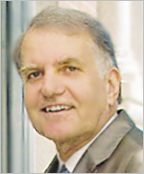 HIMSS and Medical Records Institute (MRI) have very different goals and points of view. Both started about 25 years ago. HIMSS developed into a very successful “mainstream” trade show with an attached membership organization. MRI’s conferences have emphasized the education component and helping providers to understand the consequences of EMRs and HIT.
HIMSS and Medical Records Institute (MRI) have very different goals and points of view. Both started about 25 years ago. HIMSS developed into a very successful “mainstream” trade show with an attached membership organization. MRI’s conferences have emphasized the education component and helping providers to understand the consequences of EMRs and HIT. 





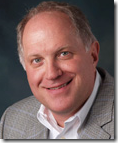

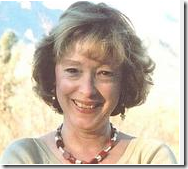
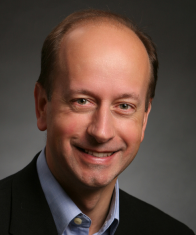


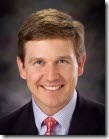





You know what will radically improve patient lives? Universal healthcare, access to housing, paid childcare, better public transport. Improve a…